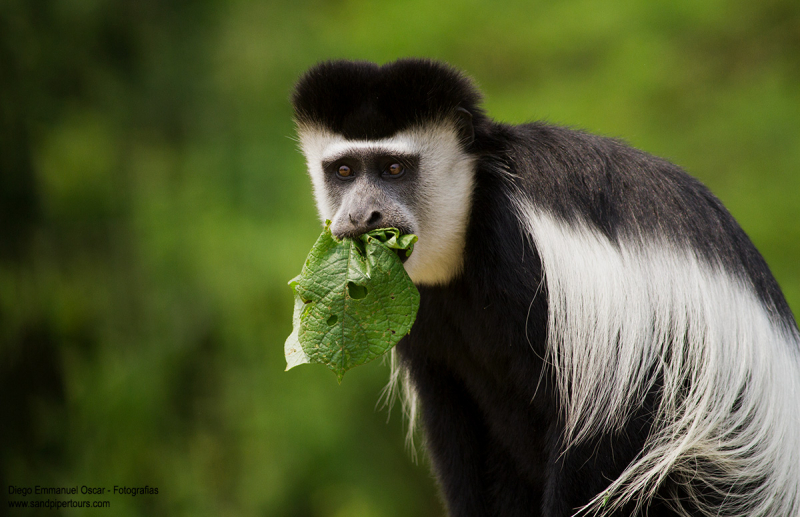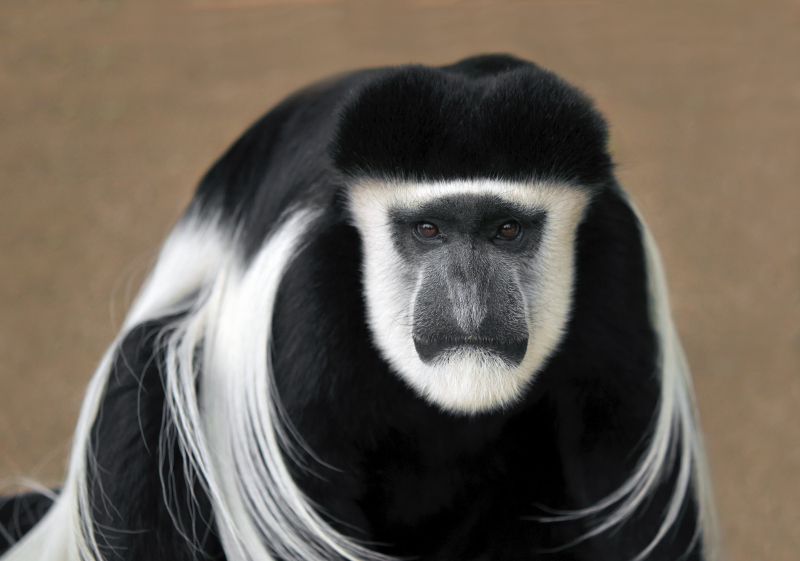Mantled Guereza
The Mantled guereza (Colobus guereza), also known simply as the guereza, the eastern black-and-white colobus, or the Abyssinian black-and-white colobus, is a black-and-white colobus, a type of Old World monkey. Several countries in west, central, and East Africa, including Cameroon, Equatorial Guinea, Nigeria, Ethiopia, Kenya, Tanzania, Uganda, and Chad, are home to this plant's native species. The species is divided into several visually distinct subspecies. Its name alludes to its unusual appearance; the term "mantle" refers to the long white hair fringes that extend down each side of its black trunk. It has a huge white tail tuft and white hair that frames its face.
The mantled guereza lives in both deciduous and evergreen forests and is a nocturnal arboreal species. It is a species that is able to adapt to changes in its habitat and favors secondary woodland near rivers or lakes. Although it was always believed that it exclusively consumed leaves, it now consumes seeds, fruits, and arthropods.
Living in social groups of three to fifteen people is the mantled guereza. These groups typically consist of a dominant male, numerous females, and females young. It possesses a polygynous mating system, and vocal communication is used to start copulation. Infants are born with pink skin and white fur after a gestation period of slightly over five months. By three to four months, their coloration will have darkened to that of adults. The dawn chorus of the mantled guereza is widely recognized. The males' "roar" is a form of long-distance communication that serves to strengthen territorial boundaries. Additionally, it employs facial expressions, bodily postures, motions, and other vocalizations to communicate.












